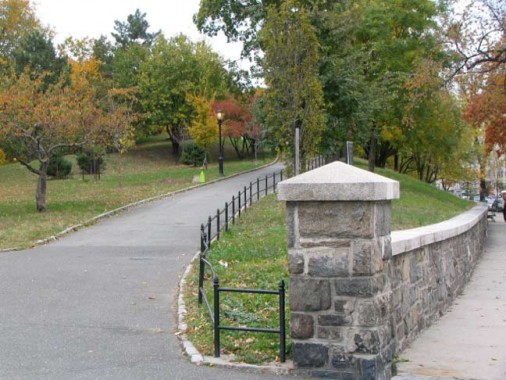A statue of Major General Franz Sigel (1824-1902) overlooks Riverside Drive at West 106th Street. Sigel, born in Baden, Germany, served in the German military until 1852, when he emigrated to the US, becoming a journalist. Joining the US Army at the outbreak of the Civil War, he helped suppress Missouri’s secession and went on to fight in Virginia and West Virginia.
Though revered by generations of German-Americans, Sigel is regarded by some historians as one of the least successful of Union generals. He was defeated by John C. Breckinridge at the Battle of New Market, Virginia in May 1864, a battle that is commemorated by the Virginia Military Institute to this day because 10 cadets were killed in the fight. Sigel went on to public relations and journalism in Baltimore and New York City.
Sigel’s statue was unveiled amid great fanfare in 1907. The sculpture, by Viennese Karl Bitter, was designed, like other statues on Riverside Drive, to be seen by passing boats in the Hudson. In the century to follow, though, lush vegetation has grown to obscure that view.
Franz Sigel Park, between Walton Avenue and the Grand Concourse from East 158th Street south to the Metro-North railroad cut, was renamed from Cedar Grove Park in 1902 to honor the general after his death. The grounds had formerly been part of the estate of Gerard and Mary Walton; two lengthy Bronx avenues are named for Gerard Walton. During the Revolutionary War George Washington and French ally Count Rochambeau used the high ground here to review British troop movements.
Sigel, in the years before his death, lived on Mott Avenue, which became a southern extension of the Grand concourse in the 1920s.
5/26/14
